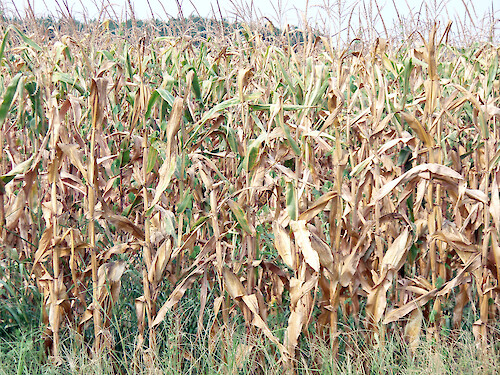SOROTI – Thousands of families in Teso Sub-region are fearing they could soon face hunger as unreliable rainfall in the area has resulted in crops planted in the first season of the year to wither in the farms.
The districts of Katakwi, Kapelebyong, Amuria, Ngora, and Kumi are the most hit by the unreliable rainfall that has made crop gardens dry up.
The farmers said that shortly after the heavy downpour in April, it drastically dropped in the subsequent months, leaving many farmers worried, with crops drying up in the gardens.
Among the affected farmers are those who cultivated crops like millet, maize, sorghum, beans, and groundnuts that were planted.
Francis Kaladi, a farmer from Abarilela Sub-county in Amuria district told this reporter that several acres of crops are being destroyed by the scorching sun, adding that they will surely suffer losses.
He told this reporter that his two acres of maize and groundnuts have withered as a result of the dry spell.
Kaladi said as soon farmers in the area finished weeding their crops in early April, rain disappeared, adding that they have missed it for almost two months now.
“It has been quite a challenge, especially for those who planted quite late since the maize crops were still in the early stages of growth and cannot withstand the hot sun that we have been experiencing for about one month now,” Kaladi said.
James Akwang, another farmer from Okokoria village in Kapujan Sub-county, Katakwi district said despite the area hosting Lake Bisina, they have received extremely low rainfall.
He is worried that he may not be able to harvest anything from his garden of groundnuts, despite spending a significant amount of money on opening the land, labour, and purchasing seeds.
“I had hopes for a bumper harvest season since rains returned in March as compared to the previous farming seasons. However, our hopes as farmers have faded because we have not received rain from mid-April to date,” Akwanga said.
According to Akwang, in a good season, one would expect to get more than 10 bags of groundnuts from an acre of land cultivated.
He added that his millet and sorghum measuring one acre each have also dried up.
Benedict Ojok, the secretary for production, marketing and trade in Kapelebyong district said the dry spell has caused panic among communities.
“The majority of our people rely on farming as a major source of livelihood but with this dry spell being experienced it’s going to be disastrous,” said Ojok.
Francis Akorikin, the Kapelebyong district LCV chairman said that the rains stopped shortly after farmers finished weeding their gardens.
He expressed fear of a looming food crisis as almost all the crops farmers had banked on have withered in the gardens to insufficient rainfall received in the district.
However, Rajab Ogogolo, the Kumi district production officer blamed low rainfall in Teso Sub-region on the degradation of the environment such as wetlands and forests.
“Teso is experiencing increasing heat and unreliable rainfall because all the trees and wetlands that help in rain formation have been degraded by human beings,” noted Ogogolo.
Teso Sub-region is one of the regions characterised with the highest occurrences of drought and floods in Uganda.
However, there is a deep-rooted link between such disasters like floods and factors like poverty, deforestation, lack of local knowledge on disaster preparedness.
It is noted that communities have ignored calls to refrain from damaging practices to Mother Nature, such as encroaching on wetlands and forest areas, which they consider more fertile and suitable for agriculture and settlement.
https://thecooperator.news/africa-coffee-exports-drop-5-1-percent-as-drought-hits-uganda/
Buy your copy of thecooperator magazine from one of our country-wide vending points or an e-copy on emag.thecooperator.news
